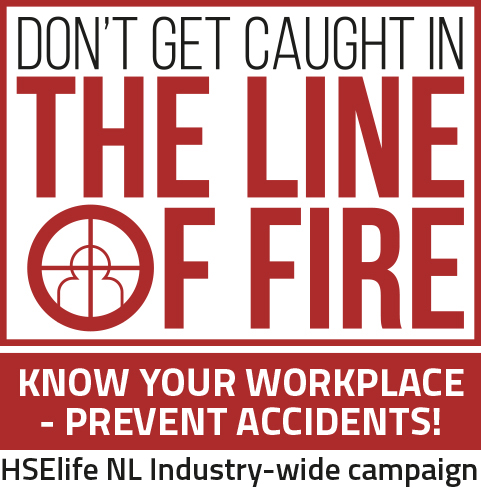Introduction
Health, safety and the environment are on everyone’s priority list. How do we ensure that all barriers are in place and that everyone is involved in the preparation of the work?
HSElife NL is very much in favour of an integrated approach when preparing an activity. This means that all parties involved must be engaged from the very first moment up to the execution of the task, must evaluate it and can learn from it. We indicate in five steps to think, observe, act and learn from and about a certain theme. It is essential to be involved and have an open conversation with all parties involved, in the office and at a location. Watch the presentation below for a complete overview of the campaign.
DOWNLOAD THE HSELIFE NL GUIDE TO A SUCCESFUL CAMPAIGN AND THE CAMPAIGN MANUAL
The complete package of tools and a clear structure characterise HSElife campaigns. Campaigns are recognizable and are supported by promotional materials and other tools. The clear campaign structure consists of the following five steps:

I. Inform
Hazards ‘in the line of fire’ are one of the most common in the oil and gas industry (data reported by the International Association of Oil & Gas Producers (IOGP) for the period 2008-2017, published 8/2018 – Report 459)
The campaign‘Don’t get caught in the line of fire’is meant to make you aware of the hazards that can occur ‘in the line of fire’, to learn to recognize them and to help each other stay out of the line of fire.
What does ‘in the line of fire’ mean? In the line of fire means that you are in a danger zone. In that danger zone, there may be situations where you can be injured by something moving unexpectedly, releasing hazardous energy, or releasing hazardous substances.
Risk areas The human factor plays an important role in the occurrence of incidents resulting in injuries. Therefore we want to support those working in front-line. This starts with discussing the 8 risk areas of ‘in the line of fire’. By asking questions and being aware of the hazards you reduce unsafe actions and conditions and maintain good working practices.
Once colleagues have been informed about the campaign and its goal, together we can determine which aspects will be assessed.
Supporting tools to use:
CAMPAIGN MANUAL
CAMPAIGN ONSCREEN GROUP PRESENTATION
CAMPAIGN HANDOUT
CAMPAIGN POSTER 5 TO REMEMBER
CAMPAIGN VIDEO
II. OBSERVE
Now that everyone understands what the ‘Don’t get caught IN THE LINE OF FIRE’ campaign means and it has been determined which aspects will be looked into, the campaign can be put into practice. That means observing practical situations. What hazards do you see? What are the risks? Are there situations that are likely to occur where you could be injured by something moving unexpectedly, releasing hazardous energy, or releasing hazardous substances? What do you notice and what do colleagues think? Is it a normal situation or could it be different? Use the on-the-spot checklist to make notes of your findings. Take pictures of the situation if necessary, always ask permission from the site manager or supervisor. And discuss your findings.
Supporting tools to use:
III. DISCUSS
Now that everyone has observed practical situations and taken notes, the findings can be discussed collectively. What have you noticed in recent weeks? What do we want to improve and how can we do that? Based on discussing findings and action points, an implementation plan can be written. This also means making clear agreements about actions, responsibilities and time planning.
Supporting tools to use:
IV. IMPLEMENT
Once the implementation plan is ready and everyone is aware of the expectations, actions and responsibilities, the agreed improvements can be implemented. By defining the improvements as a team, in which everyone’s opinion is equally valuable and important, involvement is high. Ideas of the men/women on the shop floor can lead to improvements that can be implemented organization-wide. This is what makes the HSElife NL campaign structure so successful. During the implementation period, make sure you monitor the progress and effectiveness of the implemented improvements. Take pictures of the result, when allowed.
Supporting tools to use:
V. EVALUATE
An evaluation will take place after the implementation period. The overall course of the ‘10 fundamentals for effective process safety – Integrity saves lives!’ campaign and the various aspects will be looked into. What steps have been taken? What have we improved? What have we learned? What more can be done? What are the next steps?
Take the action points, as defined in the ‘observation phase’ and the ‘discussion phase’, and discuss the successes and new situations in practice. The structure of the HSElife NL campaigns has been set up in such a way that the campaign can easily be followed up to implement further improvements.
Supporting tools to use:












